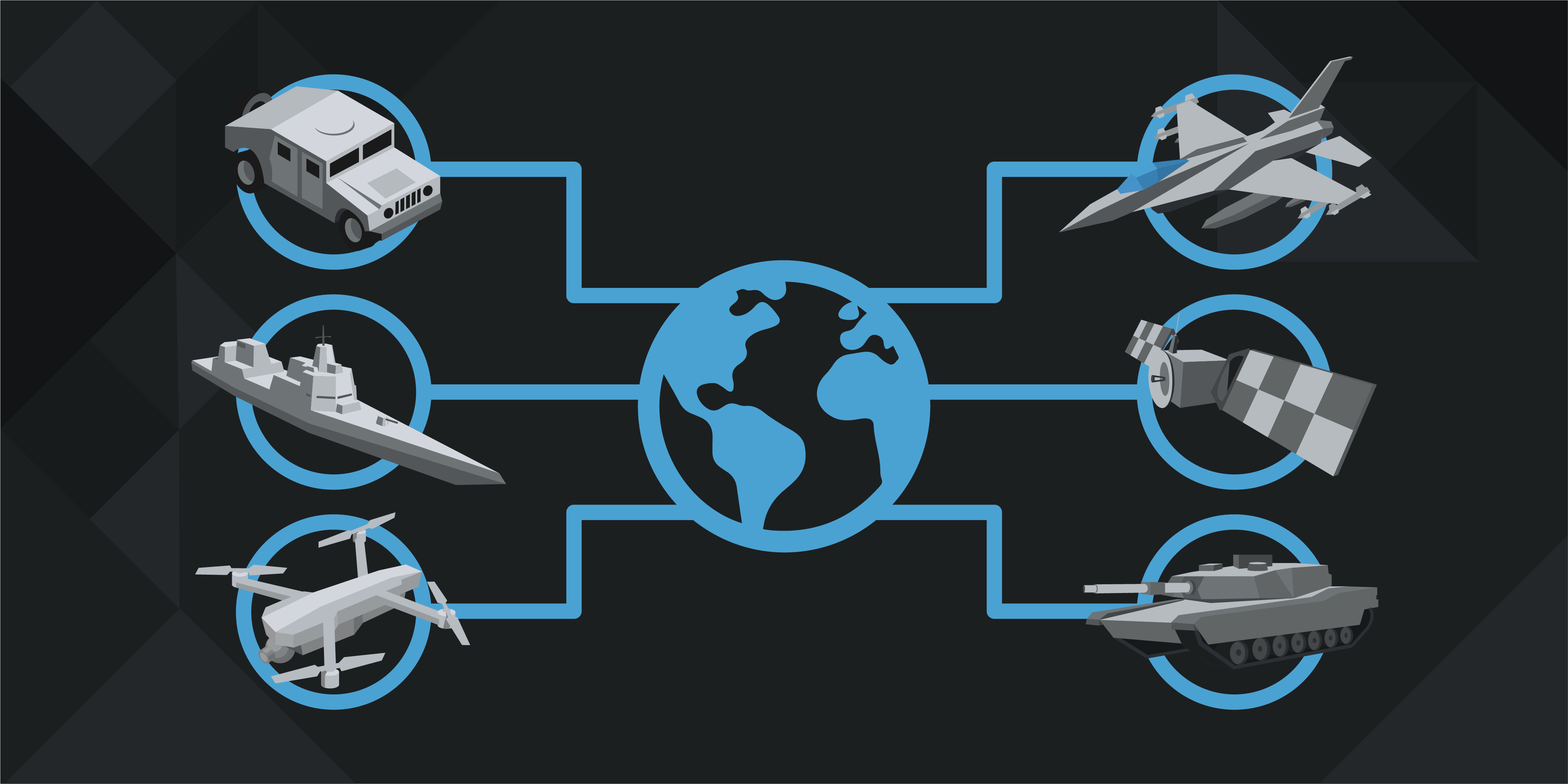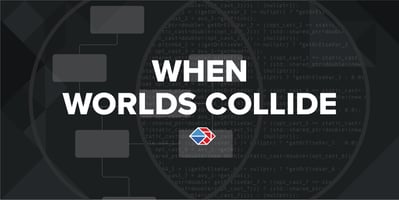This article is part of Overcoming JADC2 Software Challenges, a series of reflections on software...
Introduction to Overcoming JADC2 Software Challenges
This article is part of Overcoming JADC2 Software Challenges, a series of reflections on software challenges faced by the Joint All-Domain Command and Control initiative written by Tangram Flex’s CTO Matt Naveau.

The US Department of Defense’s (DoD) Joint All-Domain Command and Control (JADC2) initiative is striving to connect all defense systems together. The goal of the effort is to ensure that decision-makers know what is happening on the battlefield and can react with all the capabilities at their disposal. The national security need is clear; too often this is impossible today because systems were not made to talk to each other. Our civilian commercial technology is full of instant access to information, but defense systems have not yet caught up.
Defense systems that can’t communicate with one another is not a new problem, and many people have tried to solve this problem before. Some have tried to build a single technical solution, a sort of “one gateway to connect them all.” In spite of some admirable attempts, this approach usually struggles with the enormous complexity of being everything to everyone and ultimately is able to interconnect only certain types of systems. Others have tried the strategy of “everyone must standardize on a single way of communicating, and then everything will be able to connect.” While that might sound like a good idea in theory, in practice it has proven unobtainable. Famously described in an xkcd comic, it has proven impossible to build a single, universal standard for everything, and efforts to do so usually result in yet another standard. The world is incredibly complex, and delivering working systems requires trade-offs. It’s the same reason that toolboxes need both hammers and screwdrivers; one tool can’t do every job well.
"It has proven impossible to build a single, universal standard for everything. "
Not only are systems complex, the customer/supplier relationship often makes integration even more challenging. Customers often find themselves giving suppliers requirements that may need to be modified, causing suppliers to shift their work in progress. This is often referred to as “evolving requirements” or “scope creep,” and by any name it makes a single standardized approach “to rule them all” impractical. Similarly, suppliers often utilize proprietary intellectual property in their solutions. Protecting this is important for future reuse, and suppliers often negotiate heavily with their customers about what they are able to change or not change in their commercial offerings.
Understanding the real world challenges at play with system complexity and the customer/supplier relationship, thought leaders now recommend a Modular Open Systems Approach (MOSA). With MOSA, it is possible to take advantage of multiple different open architectures for different applications, in the same way that a hammer and screwdriver contribute differently to a construction project. Systems can use hardware standards, such as VITA, for defining their hardware portions, architecture standards like FACE when defining their software architecture, and interface connectivity standards such as OMS when defining how software services will communicate. MOSA also alleviates tension within the customer/supplier relationship. Customers can specify a set of open architecture standards for interfaces that can reduce the likelihood of requirement changes, and suppliers can build solutions that have public interfaces wrapped around proprietary systems. With this approach, both customers and suppliers win. Perhaps the best summary of the value of MOSA was by Secretary of Defense Lloyd Austin at the public debut of the B-21 when he said that the aircraft’s open systems architecture makes the B-21 capable of using new technologies “that haven’t even been invented yet.” Building on this wise foundation, JADC2 is embracing MOSA.
"[An] open systems architecture makes the B-21 capable of using new technologies that haven't even been invented yet."
Tangram Flex believes that MOSA is critical to the success of JADC2. Yet adopting MOSA will not be as easy as simply wanting it. Currently fielded systems (often referred to as “legacy systems”) are critical to JADC2. There is no practical way to replace every single piece of defense equipment that the United States owns with something new. Yet any fielded system built without a MOSA architecture will need to be upgraded or adapted to work with newer MOSA-based technology. As more and more MOSA-ready systems are deployed, interoperability between these standards, such as OMS and a NATO STANAG, will need to be developed. Each standard will continue to advance independently, creating additional complexity of managing systems built to different versions of the same standard. Securing a large mix of interconnected systems will be complex. Wrangling the design of complex systems in this realm and verifying that the systems meet the design intent add additional layers of complexity. Doing all of these things simultaneously at the speed of relevance – which for JADC2 means ensuring that the United States is the defense technological leader in the world – is absolutely critical. Accomplishing the goals of JADC2 is a tremendous challenge, and it is one that all of us working in the government and industry must work together to address.
In this series of articles, I will elaborate on several of these challenges and share some of the work that Tangram Flex is doing to push forward the state of the art in some of the software challenges faced by JADC2. As the JADC2 initiative looks to make aircraft platforms, space assets, surface vessels, and ground vehicles interoperate with one another in a rapidly evolving fight, a variety of software technical challenges loom on the horizon. Addressing these challenges in the near term is critical to achieving the JADC2 mission. Advances in the areas of code generation, verification, and digital engineering have the potential to overcome these challenges and accelerate the efforts of all of the government and industry partners working to achieve the JADC2 vision, and Tangram Flex is heavily invested in solving the difficult challenges in these areas. It is my hope that with all of us pulling together using the best technology available, our nation will continue to provide our warfighters with the advantage they need to succeed. Together, we will achieve the JADC2 vision.





